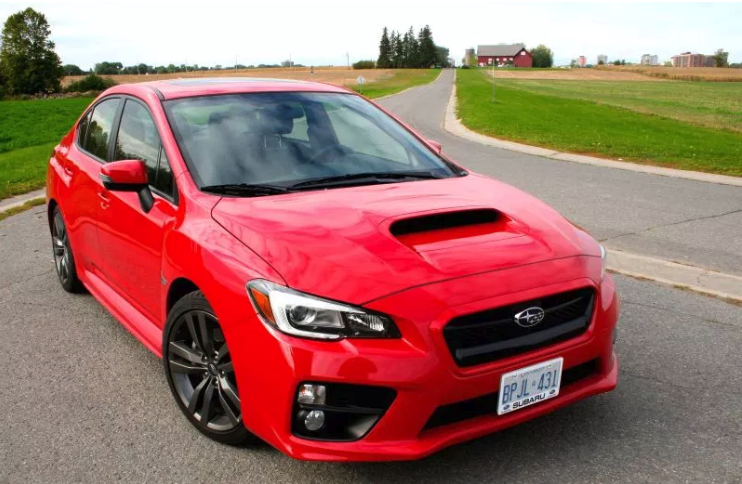Long-Term Test: 2016 Subaru WRX CVT – Part 1
Story and photo by John LeBlanc
From history’s Joan of Arc, a peasant girl who led French forces to victory over the British, to Sylvester Stallone’s cinematic Rocky, who won fans over despite losing, who doesn’t love an underdog? And if we could describe any of today’s automakers as an “underdog,” it would have to be Subaru.
Unlike some of its more established Japanese rivals, Subaru was about a decade late coming to Canada, starting in 1976 with its Leone compact. What followed were a series of vehicles that would put solid engineering and safety first, and good looks third, also going against the grain with oddities like flat (or Boxer) engines and all-wheel drive while competing in the cultish World Rally Championship.

Over the past decade, though, Subaru has been edging closer to mainstream customers, blending its distinctive engineering with more conventional styling, adding a state-of-the-art safety kit, plus plenty of luxury and convenience features. And Canadian new car buyers have rewarded the Japanese automaker handsomely.
So far this year, Subaru is breaking all of its previous sales records in this country. Practical vehicles like its best-selling Forester compact crossover, Outback wagon and XV Crosstrek small crossover seem to be in the right spot at the right time in today’s market. But Subaru also has a wild side, which is why we chose the 2016 Subaru WRX sports sedan as our next 60-day test drive subject – a once-niche vehicle targeted at hardcore enthusiasts that is trying to broaden its appeal.
Despite losing the Impreza badge from its name, the current WRX (and its more hyper WRX STi mate) are based on Subaru’s more pedestrian all-wheel-drive, five-passenger, four-door compact sedan. Subaru, though, has done more with this generation of WRX than any previous iterations to distance the sports compact from its economy car roots.
Like the first WRX (an abbreviation of World Rally eXperimental) in 1992, today’s version is inspired by Subaru’s past participation in the World Rally Championship, where between 1980 and 2008 the likes of Colin McRae, Richard Burns and Petter Solberg won multiple driver championships.
The $10,000 premium over a base $21,645 Impreza (including freight and predelivery inspection fees) may sound hefty, but the sportier WRX gets a thorough makeover that makes it look more aggressive, go faster, handle sharper, stop shorter and post winning lap times on a racetrack.
Along with its widened fenders, the WRX’s gaping engine hood air scoop hints that it’s packing more of a punch than the donor Impreza. A twin-scroll turbocharger added to Subaru’s 2.0-litre flat-four cylinder helps to deliver 268 horsepower and 258 lb.-ft. of torque – gains of 120 and 108, respectively. To help put all the extra power down to the pavement, the WRX also gets thicker anti-roll bars, firmer suspension bushings, front aluminum lower control arms and Dunlop Sport Maxx RT performance tires.
In the stopping department, the wilder Impreza sports dinner plate–sized vented rotors and two-piston calipers up front, plus large solid rotors with single-piston calipers out back. And to help keep the Subaru compact sports sedan’s shiny side up, an Active Torque Vectoring system applies the front brakes one wheel at a time to help “steer” the WRX through a corner when you’re doing your best Colin McRae impersonation.
Based on our previous experience with the latest generation of WRX that debuted last year, we aren’t too concerned it will live up to its status as one of the more exciting affordable sports compacts you can buy.
Since introducing the WRX to the Canadian market in 2002, though, Subaru has been slowly making its sports compact not only a weekend track weapon, but also a more practical and easier-to-drive day-to-day vehicle. To that end, the most significant addition to the current-generation WRX’s option sheet is an automatic transmission – the first time a shift-for-itself device is offered in the Subaru since 2008.
So while the rally driver in us may have wished for the six-speed manual gearbox in our two-month tester, this inquisitive car writer is more curious what a WRX with a slushbox will be like. And the WRX’s auto is not just the typical torque converter type. Instead, Subaru has fitted a continuously variable transmission (CVT), the type of mechanism usually associated with fuel-economy-first vehicles, like the Toyota Prius hybrid.
Branded Sport Lineartronic and costing $1,300, the WRX’s CVT technically has only one “gear” (two adjustable pulleys and a link-type chain, to be exact). Combined with the CVT is Subaru Intelligent Drive (SI-DRIVE), which allows the driver to customize how the WRX behaves by choosing from three modes of engine response: Intelligent, Sport and Sport Sharp. More interesting: the first two modes offer six stepped gear ratios, while Sport Sharp delivers eight.
If an autobox isn’t enough to attract a wider audience to its WRX, our eight-week loaner came with a $6,100 Sport-tech Package. It added a bunch of rally car non-essentials, such as a rear/side vehicle detection system, power glass sunroof, leather seating and a high-resolution “multi-gesture” touchscreen infotainment system with navigation, satellite radio and a nine-speaker Harman Kardon sound system with a thumping 440-watt amplifier and subwoofer.
All of which gets us to the many questions we’ll be asking during our 60-day sojourn with the 2016 Subaru WRX CVT: Can a hardcore, sports compact like the Subaru really cut it as a daily driver? Are all the go-fast features that have made the WRX such a hit with drivers over the past decade only impediments to making it a practical family car? Would the Subaru sports sedan be better as a hatchback, like its Volkswagen GTI and Ford Focus ST rivals? And, will all of the WRX’s newfound luxury goodies and CVT hinder its high-performance reputation?
Keep reading. We’ll have eight weeks to answer these questions and see if this underdog deserves all the love Canadians are currently giving it.




